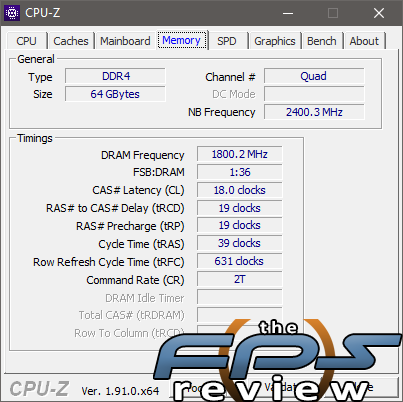Overclocking
Overclocking the Prime X299 Edition 30 is straight forward. Like any X299 system, you really only need to set your CPU voltage and turbo frequency. After that, its just a matter of making sure you supply just enough voltage to keep the system stable, and the temperatures down. I have been down this road a couple of times given that I reviewed the Intel Core i9 10980XE CPU here. At the time I did my initial testing, I was only able to achieve a clock speed of 4.7GHz. However, it was always clear to me that this CPU was capable of more. It will POST upwards of 5.1GHz, but the problem lies in being able to supply enough voltage to keep it stable, while being able to handle the thermals.


Recently, it was rumored that Intel was going to release a microcode update to motherboard vendors which would allow for greater levels of overclocking. To be honest, I don’t know if that’s true as it didn’t seem to be in that case. However, I did pair the CPU with a larger radiator and newer CPU block, which did result in an overclock of 4.8GHz. The cooling system I hooked this up to is essentially the one that I ended up putting in my personal system. This consisted of an EK Velocity RGB water block and a 480mm and 420mm radiator setup. That’s a great deal of heat dissipation and far beyond what’s probably required to do the job. Even so, I saw temperatures of 107c on two cores while testing the CPU.
In other words, I’m fairly certain my increase in overclocking headroom wasn’t due to the microcode update but rather gaining just a tiny bit more headroom on the cooling capacity of the cooling solution. Our tests were benchmarked at 4.7GHz and 4.8GHz was achieved later on after a bit more tuning. This is why you see benchmarks at 4.7GHz, and not the final outcome of 4.8GHz.
Getting back to one significant issue I have with the Prime X299 Edition 30 is its lack of mesh tuning. You can’t do anything with it. There are no Mesh settings in the BIOS at all. Therefore, performance might be left on the table. That’s something I think is unacceptable for a $750 motherboard. The Prime X299 Deluxe II is another board I have on hand which is very similar, and its the same way. Therefore, I have to conclude that mesh settings are reserved for Republic of Gamer’s motherboards which is unfortunate. Those still have LN2 provisions and additional memory tuning features the Prime series doesn’t have. As a result, I think this level of segmentation is overkill.
That said, I’ve had extensive hands on time with this motherboard and platform now, and frankly, it can be made to perform definitively better than a Ryzen 9 3950X in most tests. I don’t think the value is there necessarily, but the performance is essentially the best you can achieve without spending $400 or more on a Threadripper setup.
